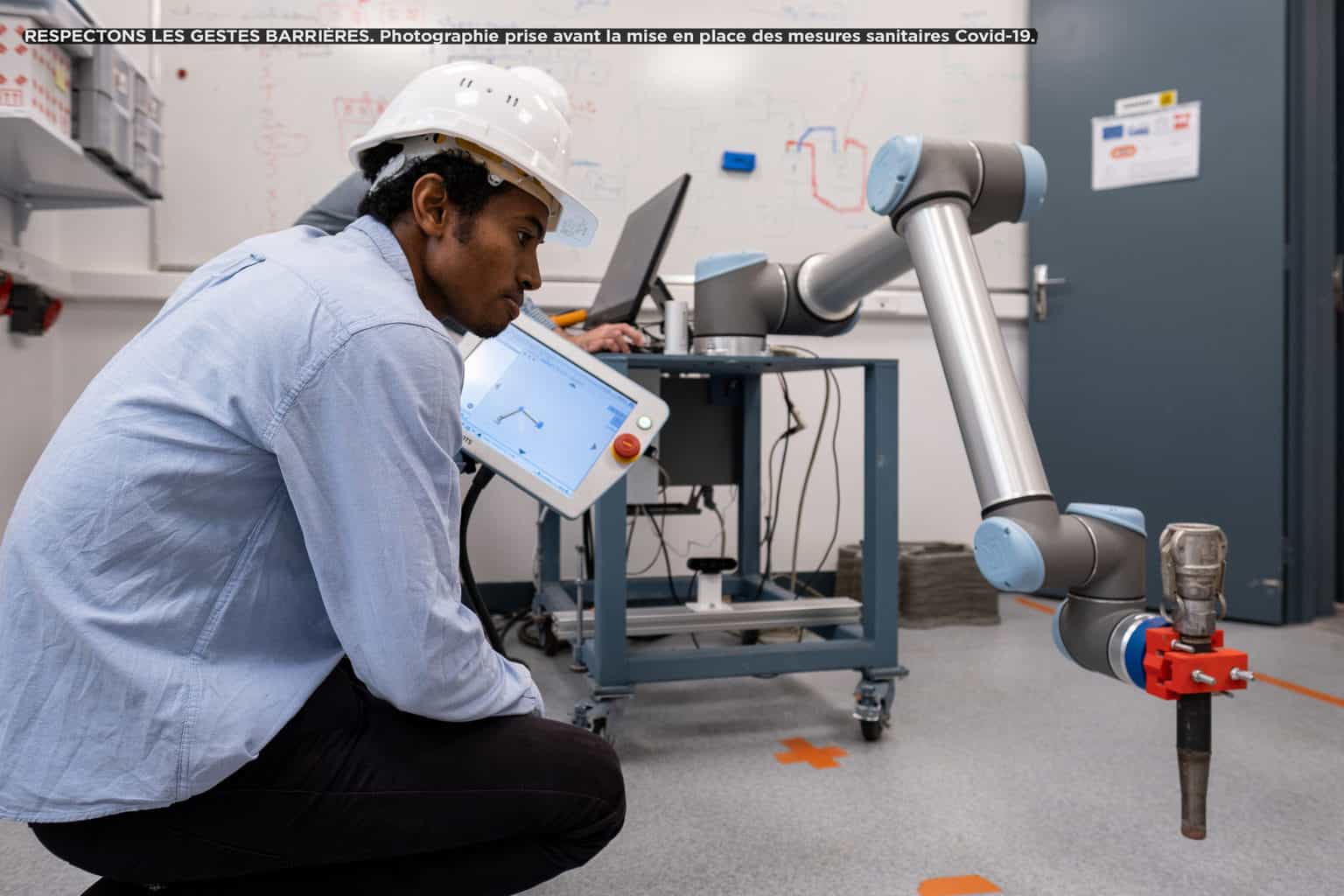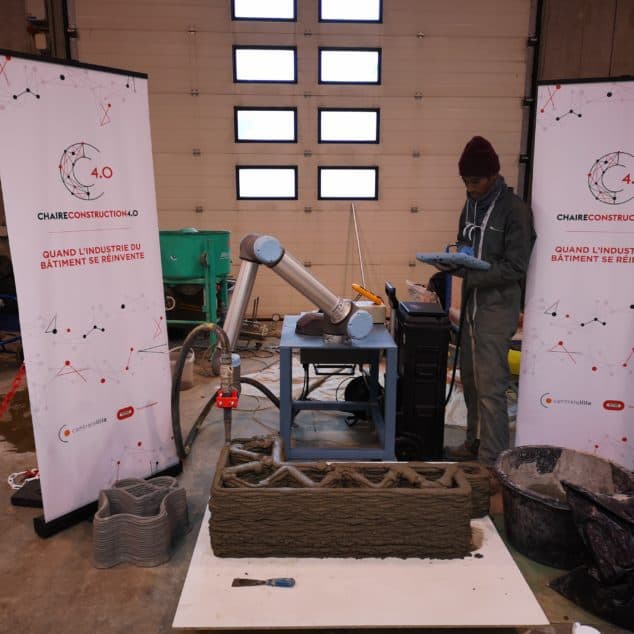
3 questions for Andry Zaïd Rabenantoandro, a PhD student at Chaire Construction 4.0
4 minutes of reading
Bouygues Construction and Centrale Lille formed Chaire Construction 4.0 in 2017, to support the digitalisation and industrialisation of the sector. We met with PhD student Andry Zaïd Rabenantoandro, whose thesis is on 3D printing in construction.

What is 3D printing and what is it used for?
Additive manufacturing, more commonly known as 3D printing, is a process that involves creating physical objects by placing layers of material on top of each other, following a digital model. If you think this is a gadget, remember that people said the same thing about the very first mobile phones when they came out! Now, nobody can deny that they have become an essential part of everyday life. 3D printing is the telephone of manufacturing industries. In figures, five major sectors represent around 60% of the use of this technology by themselves: aeronautics, the space industry, healthcare, the automobile industry, and construction, which is just beginning to use it. 3D printing offers numerous advantages. To begin with, in some cases, it can reduce working time and the overall price of construction (particularly because it avoids the need for formwork). It also makes numerous architectural design options available at a lower cost: complex geometry, optimum topology with no additional cost for construction, and intelligent construction based on biomimetics. Finally, it can play a role in protecting the health and safety of workers. Repetitive tasks, such as placing form panels and armatures and pouring concrete in situ, require a great deal of effort. Using a 3D printer on construction sites would make these repetitive tasks less arduous.Did you know? ‘Additive’ manufacturing is the opposite of ‘subtractive’ manufacturing, which is the traditional method of manufacturing. In subtractive manufacturing, material is removed until the desired shape is achieved. Additive manufacturing offers a greater freedom in the range of shapes possible, and much less – or virtually no – material wastage.
Your thesis is entitled “Introducing an intelligent printing head for printing new construction materials”. What is it about?
This thesis is the culmination of several years’ research into 3D printing, carried out at École Centrale de Lille. It is part of the ongoing research work being done into materials. During this research, we observed that the properties that materials needed to have in order to be printable caused a paradox: our material needed to be liquid in order to be able to be pumped out and laid, but it also had to be able to set very quickly in order to support its own weight in the absence of any formwork and to be able to bear the weight of subsequent layers. These result thus led us to carry out research into controlling the properties of this material, within an intelligent printing head that could affect those properties. Thus, introducing an intelligent printing head for printing would enable the material flow to be controlled in real time, with a dynamic model of the system. This would make it possible to print buildings taking account of changes in the material.
Why should we be interested in 3D printing structures at Bouygues Construction?
You should absolutely take an interest in this advancement, if you do not want to be disrupted in the future! The construction sector has always been sceptical of new technologies, such as automation. The most recent technology that has shaped construction today was the tower crane, which was a significant improvement when it came to building very tall towers. 3D printing is one of the flagship technologies of the Fourth Industrial Revolution, and you can’t miss the bus if you want to stay at the cutting edge of the sector. Especially as it offers all the (numerous) advantages described above!Concrete applications at Bouygues Construction All the knowledge it has acquired thanks to Chaire Construction 4.0 has allowed Bouygues Construction to form a partnership with a “printer”, and to use this technology in our operations. This enabled the Group, in partnership with the University of Nantes, to deliver the first occupied printed social housing in the world in Nantes. This world first will shortly be followed by the realisation of a detached house in Harfleur, in association with Cybe, another partner. Furthermore, Bouygues Travaux Publics is in the running to build a printed platform for the 2024 Olympic Games. Our R&D department is supporting all these operational projects, by providing our expertise and our knowledge of partners and of the limitations and benefits of 3D printing.
More reading
Read also




What lies ahead? 7 megatrends and their influence on construction, real estate and urban development
Article
20 minutes of reading

